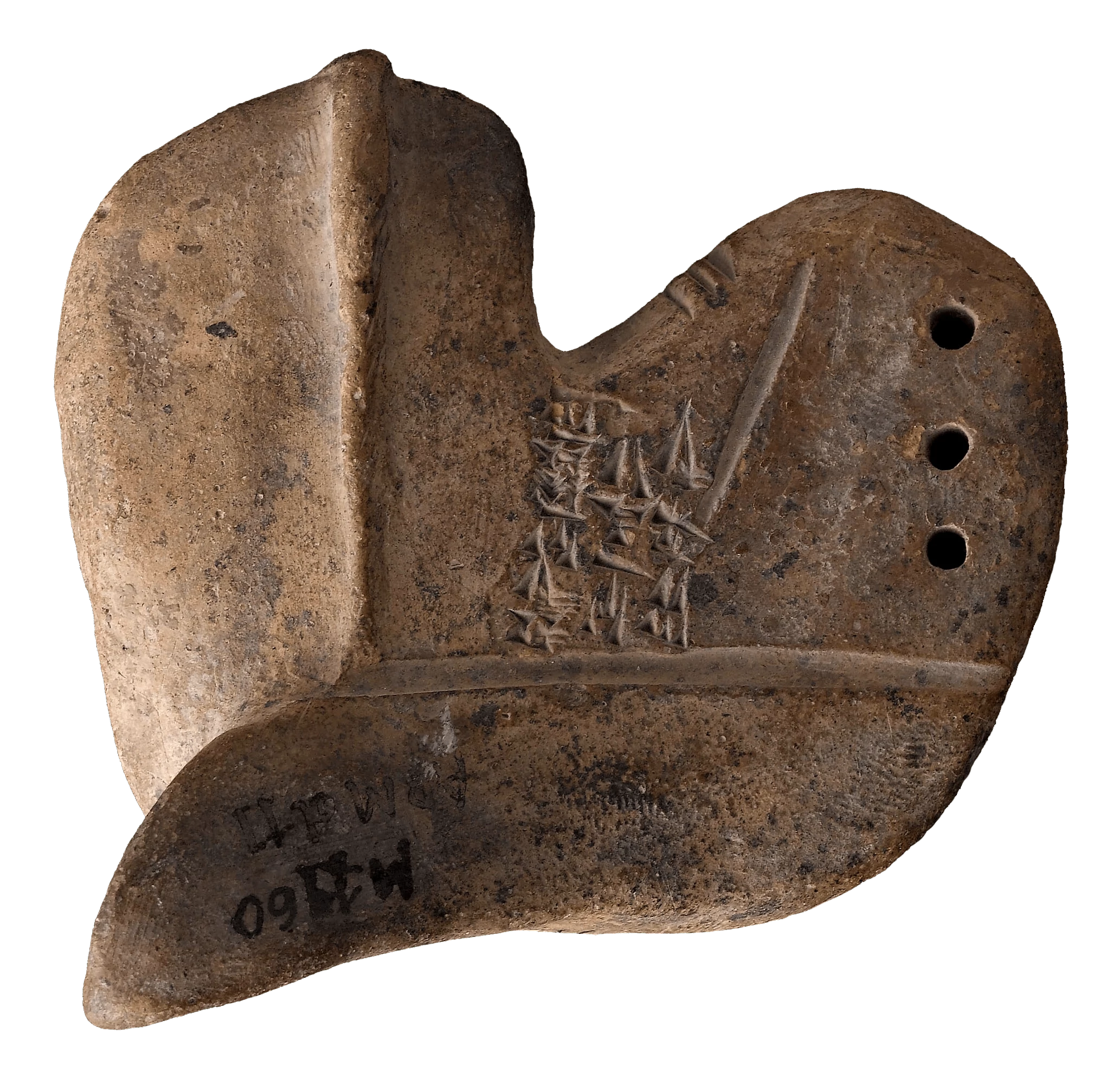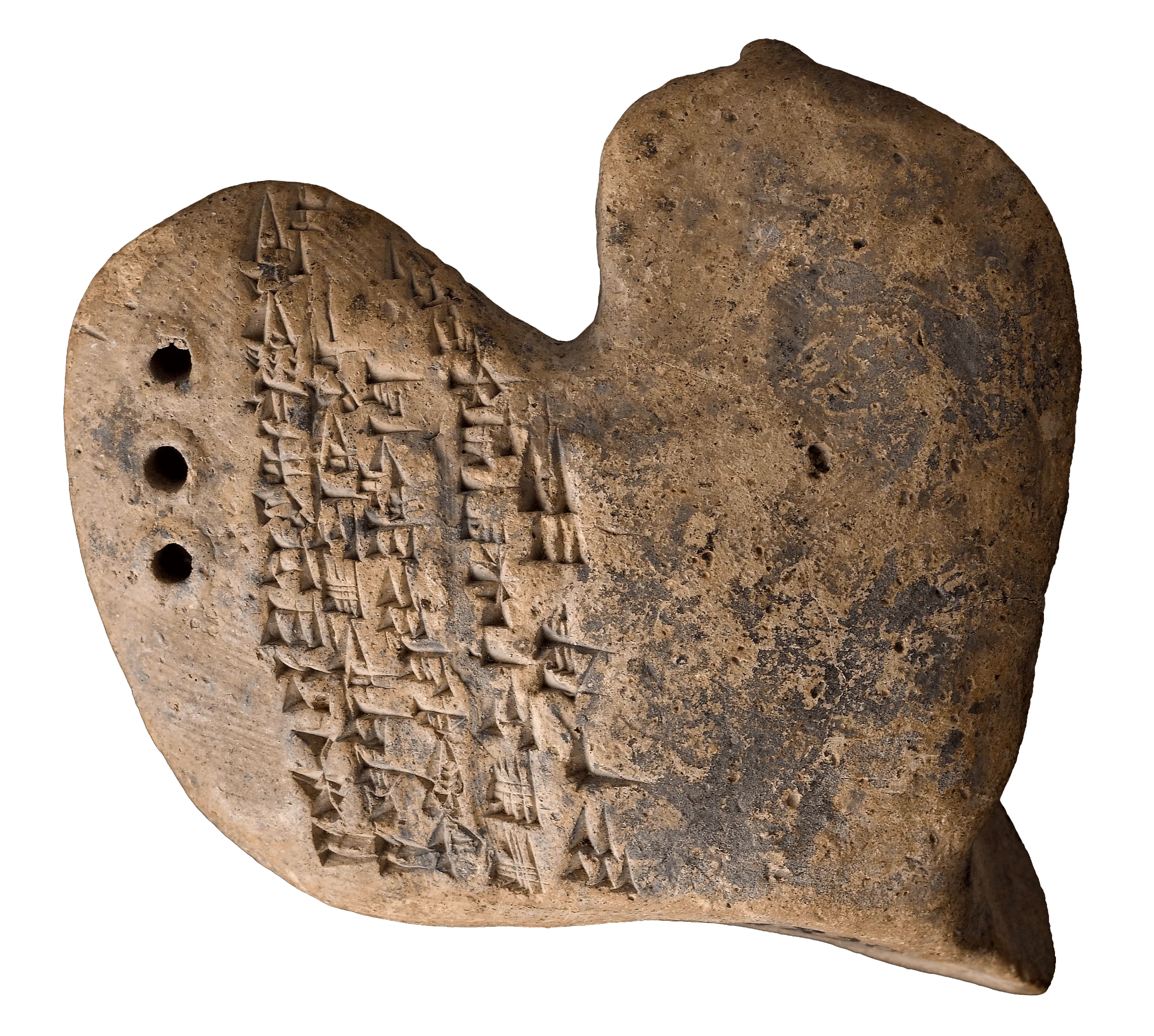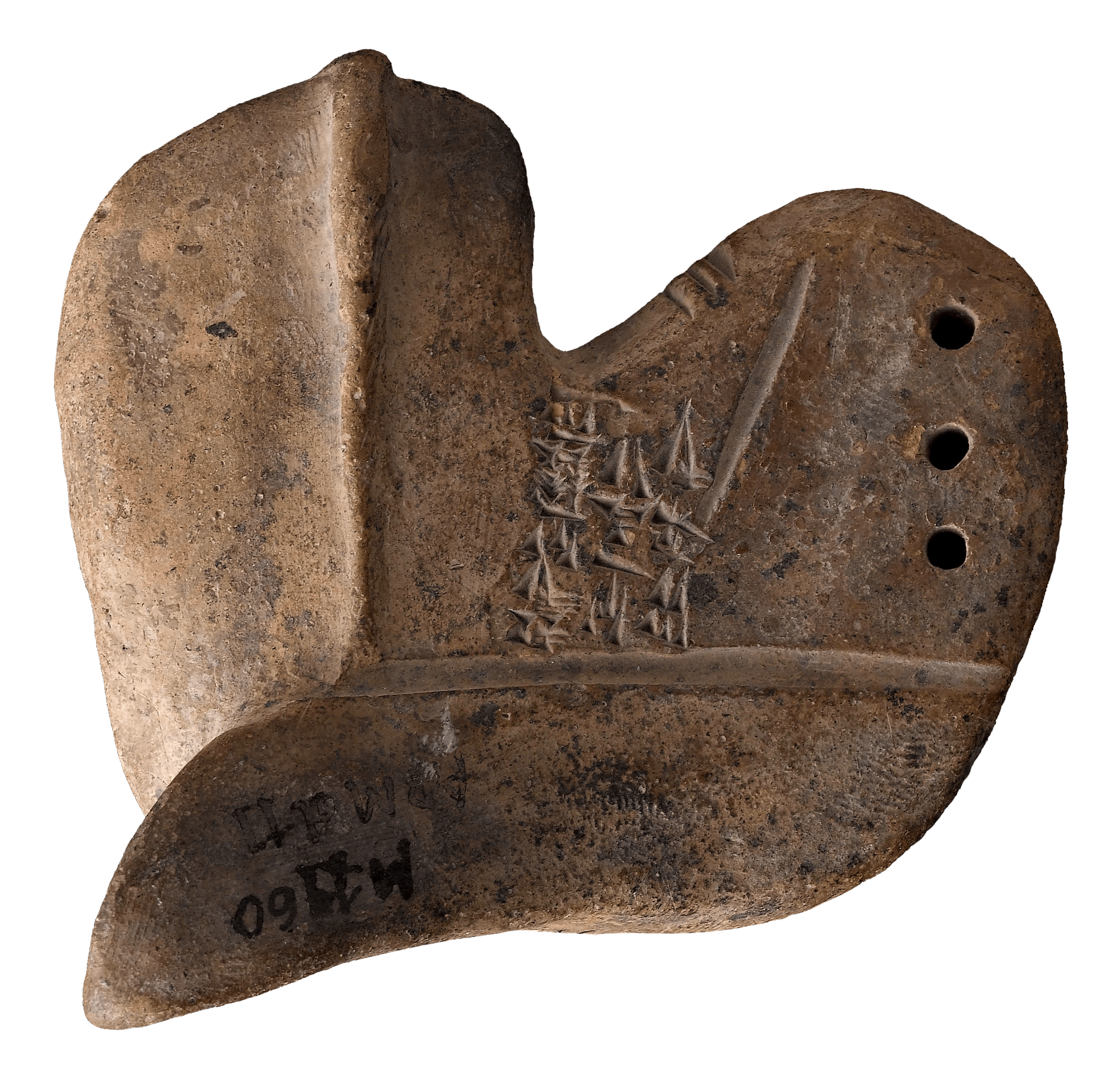

If you could predict the future, would you share your knowledge? In 1933, the archeologist André Parrot uncovered 32 clay tablets shaped like sheep’s livers. They document the practice of hepatoscopy, a form of divination where abnormalities in the livers of sacrificed animals were used to foretell coming events. And in the case of this liver, the future was looking grim.
Parrot discovered the liver models while excavating the ancient Mesopotamian city of Mari, a city obsessed with seeing the future. It’s estimated that 300-700 lambs were sacrificed each month in Mari, and the clay models were found in the living quarters of the king, documenting key events and predictions.
This particular liver describes bleak events. The left lobe, the side of negativity, shows some small deformities and a caption: If the mood of the country turns evil. The three holes are captioned with a historical note: Omen of siege, the one of [the city of] Kish. Breaches were cut through [the defenses] in Kish in front of the army, and the army of Ishme-Dagan was captured.

